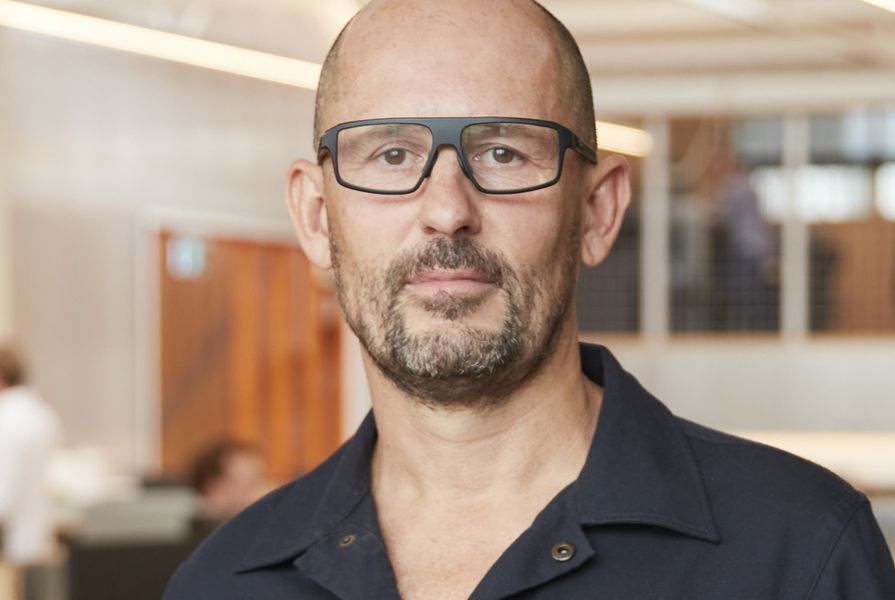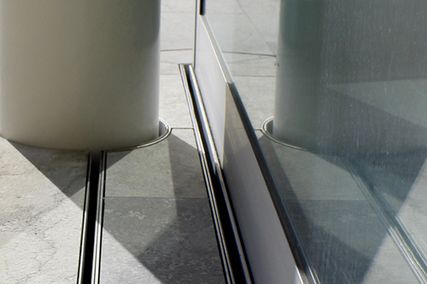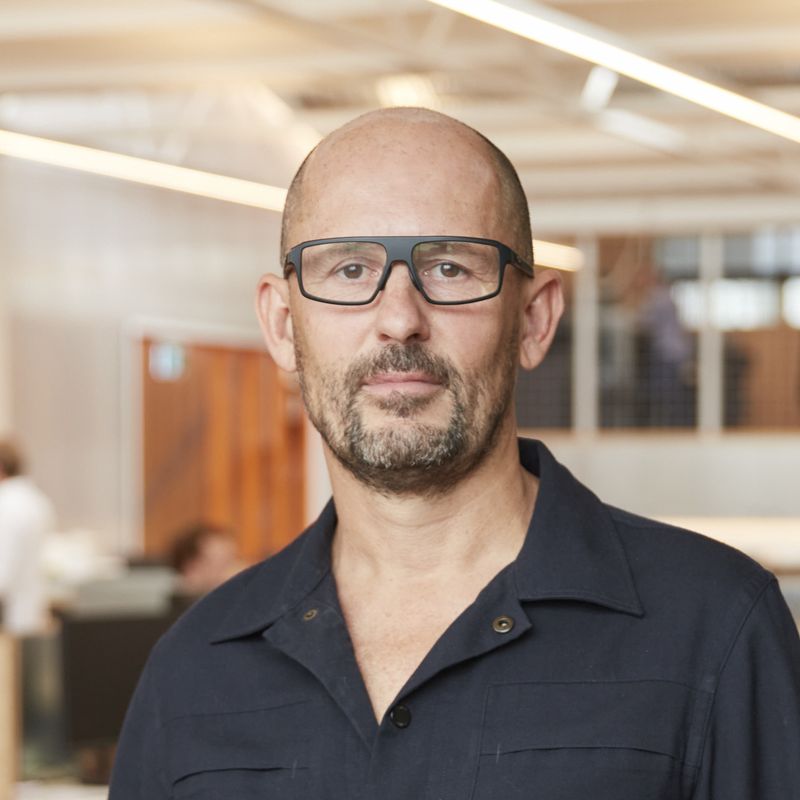Andrew Nimmo: With the widespread adoption of partial services and the ever-increasing list of specialist sub-consultants architects are required to work with, many architects have expressed concern that the role of the architect is being trimmed year on year. Is this something that concerns you? What actually defines an architect?
Jon Clements: There’s a generational shift in the industry because the older-school architects were very attached to contract admin – but things have changed. We work in a practice where it’s not unusual to be novated and not to do contract admin, and we still deliver buildings effectively … Project managers are happy to do the admin.
I would say that our value is in the strategic establishment of projects through design and utilizing designers as a vehicle for project interrogation. You can’t really take that away from the architect because of the way in which we are trained to look at design. I still believe in the idea that our design process is about exploring opportunities. The effective delivery of opportunities requires the architect to develop, detail and document the project through a collaborative process. There’s no one who is better placed to do that.
But we do need to collaborate with consultants – design is not isolated to the architect. Obviously, some of our better buildings have been designed through incredible collaborations between architects and engineers.
Problems always arrive on site and we have the ability to use design to resolve problems, as opposed to just making a decision. Architects have an important role in that aspect of administration.
Monique Woodward co-founded Melbourne- and Perth-based practice Wowowa Architecture. Now a national councillor for the Australian Institute of Architects, she was the recipient of the National Emerging Architect Prize in 2018.
Image: supplied
Monique Woodward: We can focus on doing what we do best – finding design solutions – and we’re still fundamentally there as part of the process of being mediators.
JC: The elephant in the room is percentage fees, which historically were quite common. What was the motivation for the architect maintaining cost on a project when they would attract additional fees from a cost overrun?
AN: Is responsibility for cost control something that we as a profession have not done as well as we should?
JC: I think some architects don’t take adequate responsibility for cost. As an industry, we don’t invest nearly as much money in projects in Australia as, say, Europe does. So, responsibility becomes even more important in terms of cost management.
The education system is heavily focused on design and the presentation of architecture, but we have a responsibility to teach architects to negotiate and to manage costs. Most of the subjects that give you those skills are electives – and students generally avoid them. Business management all ties back into fees and management of budgets, but at university, it’s not given enough emphasis.
MW: The fixed fee has allowed us to move from a small to a medium practice, off the back of VSBA [Victorian School Building Authority] projects. In a piece of wonderful advocacy by the Office of the Victoria Government Architect, the VSBA updated their procurement policy with the intention of championing innovation and allowing emerging and elite Melbourne practices to win school projects without having had prior school experience. They were acknowledging the value that fresh perspectives could bring to projects, and also backing themselves and their capacity to mitigate potential risk. This took courage but has resulted in the most incredible outcomes for school buildings that impact the lives of communities across the state. If only more governing bodies could show this level of bravery with taxpayer money! What if all council projects were fixed-fee and practices were selected for their site appreciation, experience, charisma, enthusiasm and capacity to listen?
JC: In my experience, fee scales are good for small practices, who have a much lower cost base than larger practices and can provide services at a lower fee level. In larger practices, the VSBA fee scales are inadequate and generally run into loss or break even at best, even though we are offering a higher level of experience and capacity.
MW: I don’t understand why, on all council projects for example, fees can’t be fixed to whatever a quantity surveyor determines – it’s stated within their own budgets, after all. Why a race to the bottom?
JC: I’ve seen quantity surveyors get fees right and I’ve seen them get fees very wrong. A competent architect should be able to assess a project on the basis of its merits and the work required. But some architects aren’t particularly disciplined at scoping the project properly before establishing the fee. Experience is relevant and you are only as good as your own systems.
We’ve just pulled out of a tender for a small project – there was a lack of clarity around the scope, and they’re trying to get fixed fees to masterplan the site, design the buildings and deliver the outcome with only indicative costs. Architects have a responsibility to push back when they think tender conditions are inappropriate or the project information, the brief, or the budget is inadequate.
For small practices, it’s challenging because they get seduced by the potential of the opportunity, sometimes without realizing what they’re actually getting themselves into.
MW: I guess what I’m saying is that small and medium practices can’t even compete in that space. With one council, we put in what felt like a billion submissions and never got one. That’s the reason I’m so grateful to the VSBA – they allowed an inroad that councils never could.
JC: Most of the VSBA projects involving emerging practices are not that complex. When a project manager asks, “Have you done a sports complex before?” … well, it’s not complex. Emerging architects deserve opportunities in this space and should be able to demonstrate their competence or ability to tackle new typologies.
MW: I think that starts to speak to the legacy of multigenerational firms. As Kerstin Thompson said in her 2023 A. S. Hook Address, you can be generous and help support small and medium practices by bringing them in to do something small.
AN: Have you found that the larger firms do try to mentor smaller firms into work?
MW: They don’t do it out of the goodness of their hearts. It’s client-led or required – like in Sydney, where its mandated.
JC: It’s becoming more commonplace in Melbourne, particularly with significant projects and in design competitions. From our practice perspective, even though we’ve got a design reputation, we’re not afraid of working with strong-willed designers in the emerging space, because we see design as a process of interrogation, and the more voices we have at the table, the more opportunities that we’ll explore.
I think the concept of mentoring small and emerging practices through projects is a really beneficial way to help them understand the implications of working on larger-scale work and the level of professionalism that’s required.
MW: Another key benefit is that a lot of team members in large practices wish they could work at a small or medium practice. So, it’s energizing for the team to cross-pollinate.
AN: In Sydney, we’re often seeing a separation between the role of the architect as a designer and as a documenter (the architects are actually having to retender for the project they’ve already designed).
JC I don’t support it, but clients see it as de-risking. I have a fundamental problem with the concept of retendering a project at a later stage. You should be able to tender for the project in whole. In fact, there’s arguments that it increases the risk to the project by bringing a new documentation team in.
AN: The CSIRO issued a research paper 23 years ago to see if there was a correlation between low fees and variation costs. They found that across the board, there is a nonlinear relationship: that as fees go down, variations and cost overruns go up, and that the money saved in lower fees is less than the money lost in variations. Has anything changed?
JC: With projects where we’ve been undercut by 40, 50, 60 percent, we wonder how they can even deliver the project. It becomes a race to the bottom. If we have to be really competitive on a fee, we have a conversation about how much we’re going to document. But limiting the scope of documentation has the potential to lead to more variations. Low fees are more likely to lead to cost escalations.
To generalize, I don’t think architects are very good at running the value argument for higher fees. When you’re working in the public space, you’ve got a whole lot of people involved in procurement behind closed doors. The fact that we’re not in the room for those conversations is the most alarming aspect. There is an argument that both the Institute and architects can do a lot more to communicate our value and how the value of our services can de-risk a project.
AN: I get the impression you both think that, while the activities we do as architects are continually changing, that’s not necessarily a bad thing. It’s not like the role of the architect is going to disappear.
MW: I think that every industry evolves in an unexpected way and has its own advocacy issues. I believe in having a position, and advocating, teaching and engaging with the Institute to have agency in that space.
JC: If you think we should be able to practise the way that we were 30 years ago, you’re kidding yourself. We need to prioritize where we can provide the most value in processes. Globally, our profession has arguably suffered from social media and could benefit from resetting itself in terms of the growing obsession with aesthetics, hero shots and awards. It’s the educated interrogation of architecture and the meaningful work that we do behind the scenes that is now fundamentally important. Successful architects in the future will be those who undertake deeper levels of research and adapt their focus towards meaningful difference.
AN: Where do you see AI coming into the practice of architecture?
JC: AI is going to be a fundamental contributor to documentation, research and reporting … We’re not far away from CAD documentation moving to autonotation.
Our ability to research and utilize creative thinking and strategic design processes to develop complex briefs for projects, unlock problems or provide opportunities to clients is critical – that’s the thing that AI won’t be able to pick up particularly quickly.
MW: I’m excited by AI – fear isn’t useful. But it’s not bringing the romance.
JC: We also need to be aware that some clients don’t necessarily want the romance; they just want the project delivered under a set of very clear equations. Sometimes our biggest challenge is working out a way to bring the romance to an unromantic project.


















